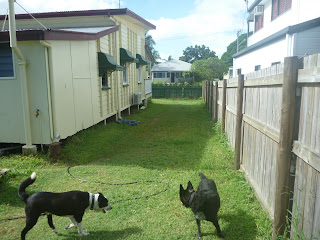From the
ABC website 10 Jan 2011
For most scientists working in the relatively new area of Earth System Science, talk of the earth “growing a brain” trivialises the growing body of knowledge about the functioning of the whole-earth system. Critically, it misses the point that changes are taking place to this system and that we must understand and monitor these changes for the sake of humanity’s continuing viable development and progress.
While the Gaia hypothesis, first popularised by British scientist James Lovelock as a metaphor of “the living Earth”, has been given religious overtones by some, most scientists, including Lovelock himself, do not assert that the Earth is “alive”. To observe that the earth has some self-regulating features that are similar to those found in living organisms is not to say that it is in fact a living being with a consciousness.
It is also important that the Gaia hypothesis is not confused with Earth System Science, which is in fact a major new development of formal science, embraced by CSIRO and many Australian universities and building on studies of global environmental change, environmental sustainability, economics, complex system science and more.
Earth System Science emphasises the interactions and feedbacks between changes in the earth’s various components - the atmosphere, the oceans, the land, the ice-caps and the biosphere comprising all living things - interactions which can fall through the cracks between traditional scientific disciplines. This is important because many of today’s human-induced changes to the earth’s environment are affecting each other and coalescing to become issues of major global concern.
Climate change, the future of energy and water resources, food production, and decline in biodiversity stand out as much discussed examples of such interacting processes that have a strongly global character.
A critical feature of Earth System Science is to recognise that human activities now form a major interactive part of the functioning and evolution of the entire planet. This is a significant departure from the past where humans have been studied separately from the environment around us. We have been regarded as villains impacting the planet’s natural systems, and victims suffering from the way the planet reacts, for example through changing climate.
This new approach means that the natural science of global environmental change must be linked with social science, economics and the humanities, that is, “global environmental change” must become “global change”.
It also means that the research encompassed by Earth System Science spreads beyond the traditional concerns of environmental sustainability to consider factors as diverse as the psychology of denial or the institutional and political arrangements that can lock societies into behaviours incompatible with long term societal aspirations on this finite planet.
Activity in Earth System Science is going through a growth spurt both in Australia and internationally. In December the Australian Academy of Science, with support from the Department of Climate Change and Energy Efficiency, ran the First Australian Earth System Outlook Conference. At this conference a decadal plan for the new science in Australia was launched by the Chief Scientist, Professor Penny Sackett: To Live within Earth’s Limits:
An Australian Plan to Develop a Science of the Whole Earth System.
This document was four years in the making by the National Committee for Earth System Science. Overseas, the International Council for Science working with the International Council on Social Sciences, has just released a major document, based on an open web-based consultation, entitled: Grand Challenges for Global Sustainability Research. That document is providing the framework for a major revamping of the international global environmental change research programs, which have been running since the 1980s.
With these Australian and international programs getting under way in the coming year or two, we can anticipate a substantial increase in the information that science can bring to inform people, businesses and governments about the limits and opportunities that the earth provides for the growth, development and well-being of present and future generations.






















